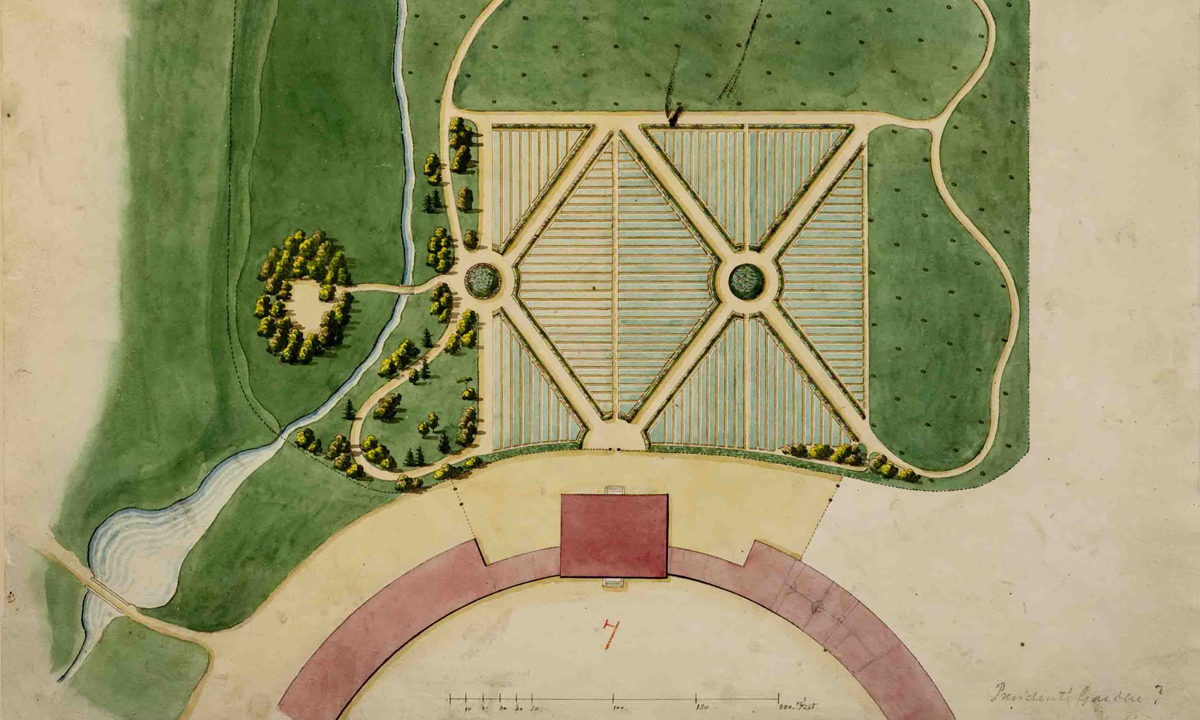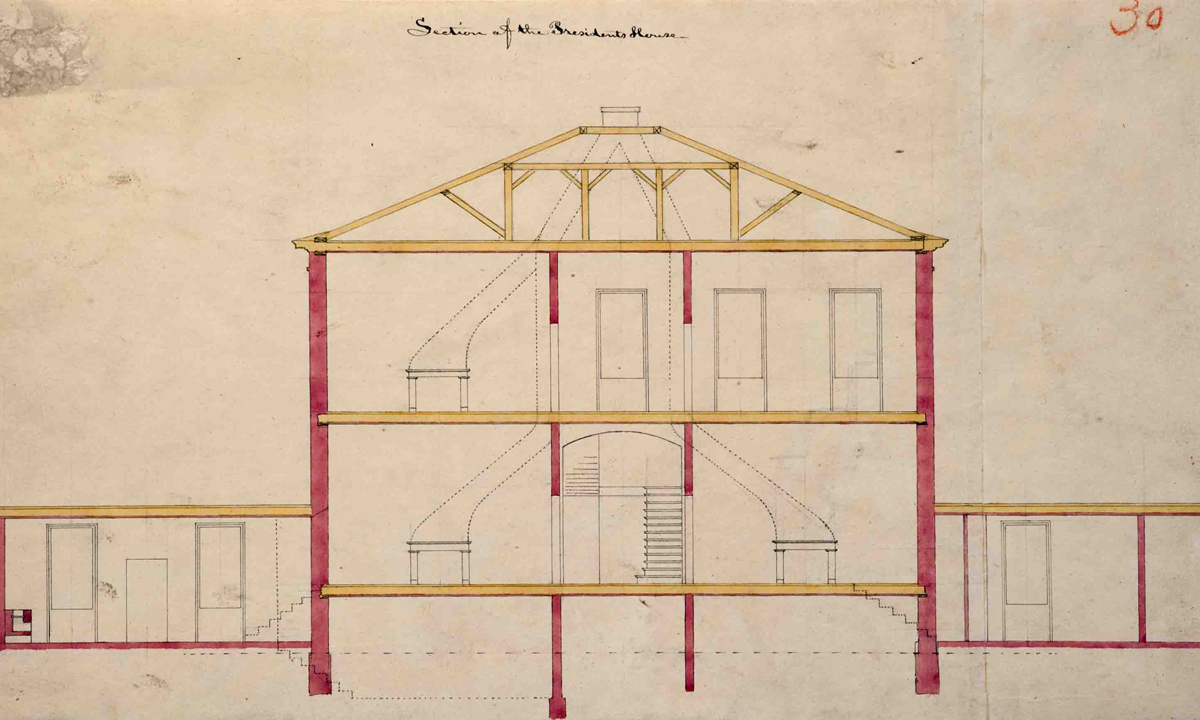The Grand Design: Joseph Ramée’s Drawings for the Union College Campus
April 11th-June 2nd, 2013

detail of Plan of Union College, ink and wash on cream wove paper, 9 x 11 1/2 inches, Special Collections, Schaffer Library, Union College” width=”300″ height=”180″>
Joseph Ramée, detail of Plan of Union College, ink and wash on cream wove paper, 9 x 11 1/2 inches, Special Collections, Schaffer Library, Union CollegeThe design of the Union College campus has evolved over the years, but its original design was conceived by Joseph Ramée in 1813, making this year the 200th anniversary of that design. The stamp of the Ramée design is still evident in building placement and landscape cultivation. His design was elegant and emphasized a simple neoclassicism as well as the integration of structure and nature. Paul Turner points out that the design was one of Ramée’s most important works and, at that time, one of the most ambitious and innovative designs for any American college.
Joseph Ramée was born in 1764 along the Belgian-French border and trained in Paris. In 1812, he came to America at the request of David Parish and was introduced to Union College President, Eliphalet Nott. Nott commissioned Ramée to design a campus on land to the east of Schenectady for fifteen hundred dollars. The result is an aesthetically compelling and spacious use of the land, a plan that undulates through planned gardens. Blind arcades with varying color form a repeated pattern across the building facades, which are still seen today. The stream, envisioned to encircle the campus, was never engineered, but a part of it flows through Jackson’s Garden.
The portfolio containing the Ramée drawings, which are here displayed as facsimiles, was found by accident in the attic of Old Chapel by Professor Codman Hislop in 1932, “its cover green with age.” It included a handwritten list of 45 drawings, on exhibit here, created in 1856 by Jonathan Pearson, then a professor and college treasurer. A number of the drawings are two-sided, some are finished watercolor renditions, and others are quick sketches. The majority of the drawings show buildings that were never constructed, and most drawings of buildings that were built are missing. This is not surprising as they would have been subject to loss or damage during the construction process. As a group they document a significant part of Union’s history and the influence of European taste that was beginning to transform architecture and planning in America.




